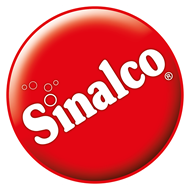The Art of Selling
Early in my selling career, I thought that you have to do 100% of the talking until you get the customer to buy your product. I also thought that a good salesperson is a smartly dressed, glib-talking salesman with a briefcase full of elixir selling to gullible customers.
I began my selling career with that idea in mind and I used it in my selling approach. But I found it too frustrating and stressful. Most of the customers I sold to, were either not interested, not convinced, or simply not listening because I'm doing most of the talking. Some would even engage me in a heated argument when I've said too much. In the end, I won the argument but I lost the sale. I only made a sale in a few instances where the customers actually needed the product and didn't involve too much selling.
I began my selling career with that idea in mind and I used it in my selling approach. But I found it too frustrating and stressful. Most of the customers I sold to, were either not interested, not convinced, or simply not listening because I'm doing most of the talking. Some would even engage me in a heated argument when I've said too much. In the end, I won the argument but I lost the sale. I only made a sale in a few instances where the customers actually needed the product and didn't involve too much selling.
My selling style suddenly changed (which was talking too much), when I attended a sales training back in the '80s. It was called the "Professional Selling Skills " training module. It was "the" popular sales training module in those days, and the lessons I've learned in that training were priceless. After intently listening for two days and actively participated in the drills, I'm convinced that selling is not entirely talking. The training made me realize that selling is 80% listening and 20% talking. To my mind, it was a mind-blowing concept that erased all of my preconceived notions about selling - which is blah blah blah all the way. I asked myself if selling is 80% listening, then what should a salesman listen to? The salesperson must listen to the customer's verbal messages.
Customers in general actually communicate a lot of underlying messages that would make or break the sale if unheeded. The verbal messages may contain needs, wants, satisfaction, dissatisfaction, doubts, misgivings, objections concerning the product or services being sold to them. However, those are vaguely communicated to the salesperson. It is up to the salesperson to decipher what the customer is actually saying.
A salesperson while listening, should apply the remaining 20% to talking. But it is not simply talking about the product. It is also the judicious use of questions to bring out the underlying needs of the customers. In selling parlance asking questions is referred to as probing.
The questions may come in an open or close probe. Open probes are answerable by open statements which would require follow-up questions to really zero in on what the customers are saying. The salesman will be successful in using open questions to identify and clarify objections and progress towards the closing.
Close probes are answerable by either a yes or no. Paraphrasing the customer's response is an effective type of a close probe. The close probe is also appropriate when leading customers to agree on product or service benefits and then making a trial close.
Close probes are answerable by either a yes or no. Paraphrasing the customer's response is an effective type of a close probe. The close probe is also appropriate when leading customers to agree on product or service benefits and then making a trial close.
Responding to the objections properly will make or break the sale. The questions mustn't lead to an argument. After objections are fully satisfied, the salesperson must attempt to close the sales with questions like: would you like to sign the contract with my pen or yours? Or what color would you prefer blue or red? Or, do you want it delivered this Monday? If the customer says yes, the salesperson has a sale.
Fresh from the training, I enthusiastically applied what I've learned. As I was going the rounds conducting sales calls with the new knowledge, I noticed that prospects also send out non-verbal messages as well. The non-verbal messages are equally important. The customer might even be saying, albeit, non-verbally, that he or she is ready to buy the product. Unfortunately, there is a tendency for a salesperson to keep on rambling. The best thing to do is shut up and get the order. This scenario shows that the salesperson failed to read the non-verbal message.
It is important to keep in mind the 80% and 20% ratio. If a salesman would do 100% percent talking it will most likely kill a sale. After that training, I've applied it in all of the selling situations that I'm I've been in and have elevated selling into an art form to this day.
Note: The author was a salesperson for nearly 30 years and have applied this formula during the course of his career. He is also involved with a social enterprise and non-profit organization.




Comments
Post a Comment